Slush 2018. Day one, day two
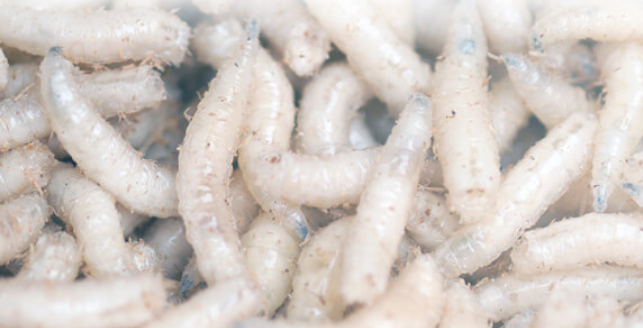
December 3, there were preliminary events , on December 4-5, the main startup fair
Some booths have been very instructive. As it turned out, to do a high-tech business can literally from ... animal waste.
All photos in the text are clickable - full-size images are opened.
The first day
In addition to folk arts, corporations also come to such exhibitions. Concern Renault rolled out an unmanned version of Twizy . They say it goes well even in ice and snow.
')

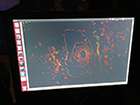



The machine looks nice, but, frankly, to drive in such a dumb - because of the compactness, there are practically no passive safety systems. I call these - "death capsule." The drone itself may drive perfectly, but who will vouch for the rest of the road users?
Test drive was available, it was possible to drive. The car had two laydars: one on the roof and another one in the back.
Of the giants, AirBus was still present, or rather not the corporation itself, but the wards from their accelerator. For example, a project where artificial intelligence analyzes the flow of people and transport in public places, in this case, the area in Madrid is monitored. Our strategic development director was recently at the Global Security Exchange 2018 , there were several companies dealing with this topic.

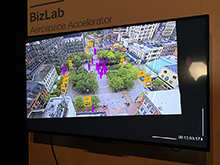
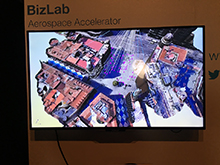
In general, Big Brother has been watching you for a long time.

This rack from Naava serves not only to bring joy to lovers of flowers. His mission is to increase life expectancy. The presence of such a shelf with plants, according to the creators, adds +500 points to the microclimate of the room. These portable greenhouses were made up by the entire Slush.
The shelves with plants, of course, are “smart”: watering, the cyclical nature of the lighting, the fertilizing with fertilizers occur automatically.
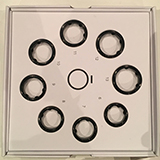

Rings from Oura analyze the quality of sleep. They do not wake up, unlike "night" bracelets, and sleep with a ring on your finger is more comfortable than with a bracelet on your hand. The company specializes in similar wearable smart devices, the ring is one of their many developments.

Siemens introduced software for modeling assembly lines.
The program Mechatronic Concept Designer is now possible to design the whole plant in the evening :)
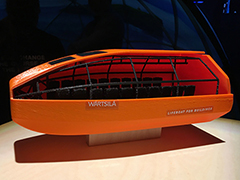
Wartsila was so impressed with the films “2012” and “San Andreas Rift” that they started developing a mini-ark in case of tsunamis and floods in coastal megalopolises.
Such a reinforced rescue bot is located directly in the office building, and if the city is absorbed by the water element, 20 elected (the president of the company and the board of directors) will be able to leave the crumbling skyscraper.
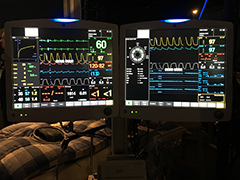
General Electric presented a “smart” workplace for the surgeon. Difficult expensive thing, all biological parameters are monitored.
In parallel, non-stop mode included speeches and discussions in special zones. There was no time to listen to them, I preferred to bypass the exhibition and still did not have time to go everywhere. You can listen to the speakers themselves on the Slush youtube channel.


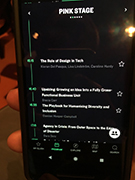
But back to startups.
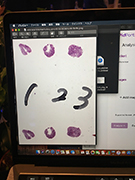
The Japanese company Medmain using the PidPort system remotely diagnoses from photographs. A sample of human tissue is taken, diseases are determined by the patterns in the photo. This is not positioned as a replacement diagnostician, rather, as an additional help to physicians. We at EDISON worked on similar problems, only in a broader application - it was about automating medical examinations .
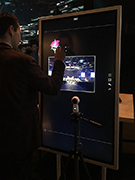
This is how a modern blackboard should look like - a large tablet on which you can write by hand, play educational films, etc.
Of the Google projects, there was Wing - the delivery of small parcels by drones. The power reserve of the aircraft is 20 kilometers, that is, it can fly 10 km somewhere and return. 2-3 bases cover a large millionaire.
It looks like this: the drone arrives at its destination, the customer receives an SMS with a code. After entering the code in the application on the line the package is lowered.

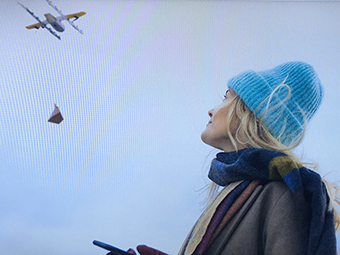
All this has been actively tested in Australia for a couple of years.
There are doubts that this know-how will take off in Russia - batteries in our northern latitudes discharge quickly in the cold.
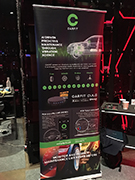
Vibration sensors Carfit installed in different places of the car, fix the resulting defects, predict the emergence of new ones. The system calculates the wear of the machine, makes a schedule of service.
The startup has already taken place - it cooperates with insurance companies with might and main, and in the event of insurance claims, the information collected by these sensors is taken into account. Also, good performance can contribute to the sale of cars in the secondary market - if there were no incidents (as confirmed by the sensors), then you can sell an unbeaten car more expensive.

Numerous complex projects of the University of Helsinki at the exhibition looked modest, often simply in the form of a banner on which it says what serious things they are doing. This, for example, tells about the development of a vaccine for bees. Urbanization and progress, alas, kill wildlife. In particular, insects live less and less near cities. If insects die out at all, it will cause irreparable damage to the planet.

And this is the St. Petersburg startup TRIK - acquaintance of children with programming with the help of a robotic designer. You assemble a robot, teach it, at the same time studying algorithms. In any case, with the boys, this approach works with a bang.
At the end of this day, one of the new acquaintances invited me to visit the game club (hello, Mosigra!). The theme itself is popular with geeks from around the world. After spending all day on your feet - a great way to relax and get to know new people.


Second day
Once I was torn between programming and music. The choice was made in favor of programming, but some musical skills remained.
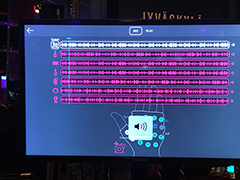
The seals have an accelerometer, so the volume and frequency could be controlled not only by pressing buttons, but also by moving the hand.
Of course, a glove is not a full-fledged musical instrument, so, a simple midi-keyboard. A good option for learning music. Or for fun with beer with friends. I think the glove could also be used for concerts as an additional means to entertain the audience and give the show an atmosphere of “non-phonogram”.

One Italian tennis player developed the application Join Set - search for a partner for playing tennis. Geolocation is built into the application, you can book a court, indicate the level of your game and the desired level of the opponent. Tinder for tennis players.
In principle, you can write similar applications to search for partners in other sports, but this approach will by no means work everywhere. In the case of tennis, it works well. We at EDISON have a rich experience in writing mobile applications , so the idea of the Italian is remembered.

The guys from Empath Inc. developed a neural network that determines the emotions of the voice. There are many dozens of types of emotions. But there are only a few basic ones, the rest are basic combinations. The application defines anger, joy, sadness, calm and excitement.
A startup is monetized - you can download a sample, it is analyzed, information about the percentage content of the main emotions is given. 1 recognition = 1 cent.
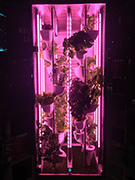
In addition to the aforementioned Naawa, other “smart” racks with plants could be found.
This high-tech refrigerator for growing fresh greens is also automated to the dining table — water is circulating, fertilizers are being fed, and seedlings are being prepared. Vertical garden.
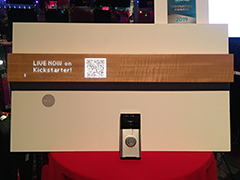
The interior board for the "smart home", I would have hung it up in my apartment. Multifunctional - you can display twitter in it, connect it with a bell and intercom, communicate with children from a distance, etc.

From the energy sector, Tera Loop attracted the attention, offering an original alternative to batteries. Production and disposal of the latter causes a sensitive impact on the environment, but it is possible to store energy differently. In this case, it is proposed to convert the excess electricity into kinetic energy, which, if necessary, is returned back to the network.
It will probably be easier to understand how this works by watching the video.
The diameter of the ring - 3 meters. It is possible and increase. Also, these rings can be stacked on top of each other, then energy can be stored multiple times more.
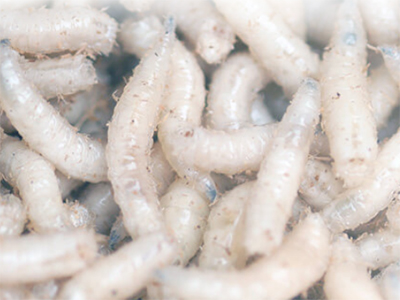
Image: musca.info
And for an appetizer, Musca , an interesting agricultural startup of the year in Japan, won one of the prizes at Slush.
The main tool are flies, which flock to the excrement. Flies lay eggs from which maggots hatch, devouring feces and processing them into fertilizer. Fertilizer production with the help of the larvae is the idea of a startup. However, if you take ordinary flies, then there are a number of problems.
- All this happens rather slowly - compost formation can take three months.
- Larvae die from overpopulation when they are highly concentrated in one place.
- It is necessary at the end to separate the larvae from the fertilizers that they have created.
It turns out that Soviet scientists have selected a special type of fly, capable of laying many eggs, and at the same time the hatched larvae do not die from overcrowding (the main thing is that they have something to eat). To this end, over the course of 45 years, 1100 generations have been raised. The larvae hatch fairly quickly - just 8 hours after laying eggs by flies. They devour excrement and process it into bio-fertilizers. Since Soviet flies lay much more larvae that survive, manure is processed in a week. But that's not all. Larvae are also valuable, because it is a high-quality protein that can be fed to fish, pigs and chickens. The problem of separating the larvae from the fertilizers is also solved by small forces. Since the larvae are alive, they crawl upward and creep out of the fertilizer as they grow.
All this works in the form of a kind of automated conveyor with minimal participation of technical staff. As they say, waste - in revenue! The company invites you to see a working plant in Japan.
Slush afterparty
After the official events, there was a disco at which one could also make new acquaintances.
I got to know the locals who keep a small business - a cooking company by subscription with delivery. They told me that now in Helsinki, there is a confrontation between the Finnish courier services and the local monopolist in the field of fast food delivery - the company foodora. There are leaflets all over the city calling for boycotting this grocery Uber. Great guys, like true Finns, invited to hockey.

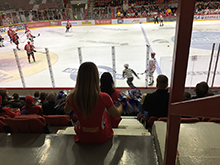
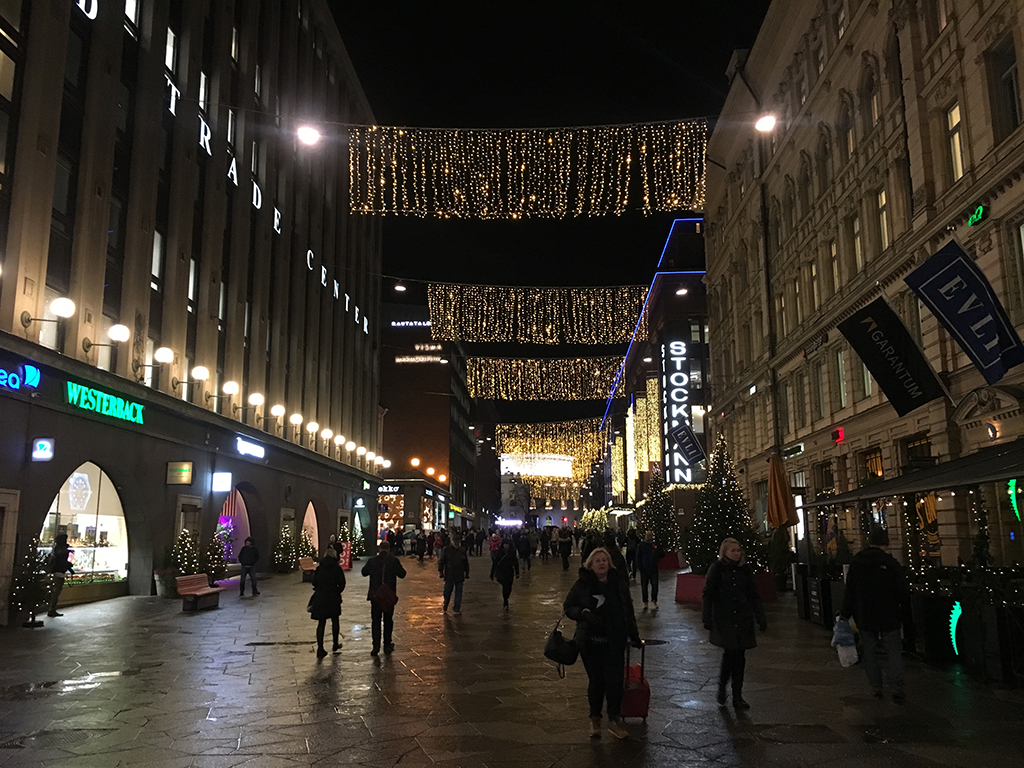
To summarize, I can say the following about my first Slush.

- In general, I liked it, I do not mind attending the conference in the future.
- There were a lot of interesting, but few unique startups.
- I would like more success stories. Many presentations from those who only conquer their place in the sun - and this is good. At the same time, I would like to hear on the next Slush more stories of completed projects that have reached international proportions.
If you were an investor, which of the startups would you invest in?
Start: Slush 2018. Day Preview

Source: https://habr.com/ru/post/435584/
All Articles